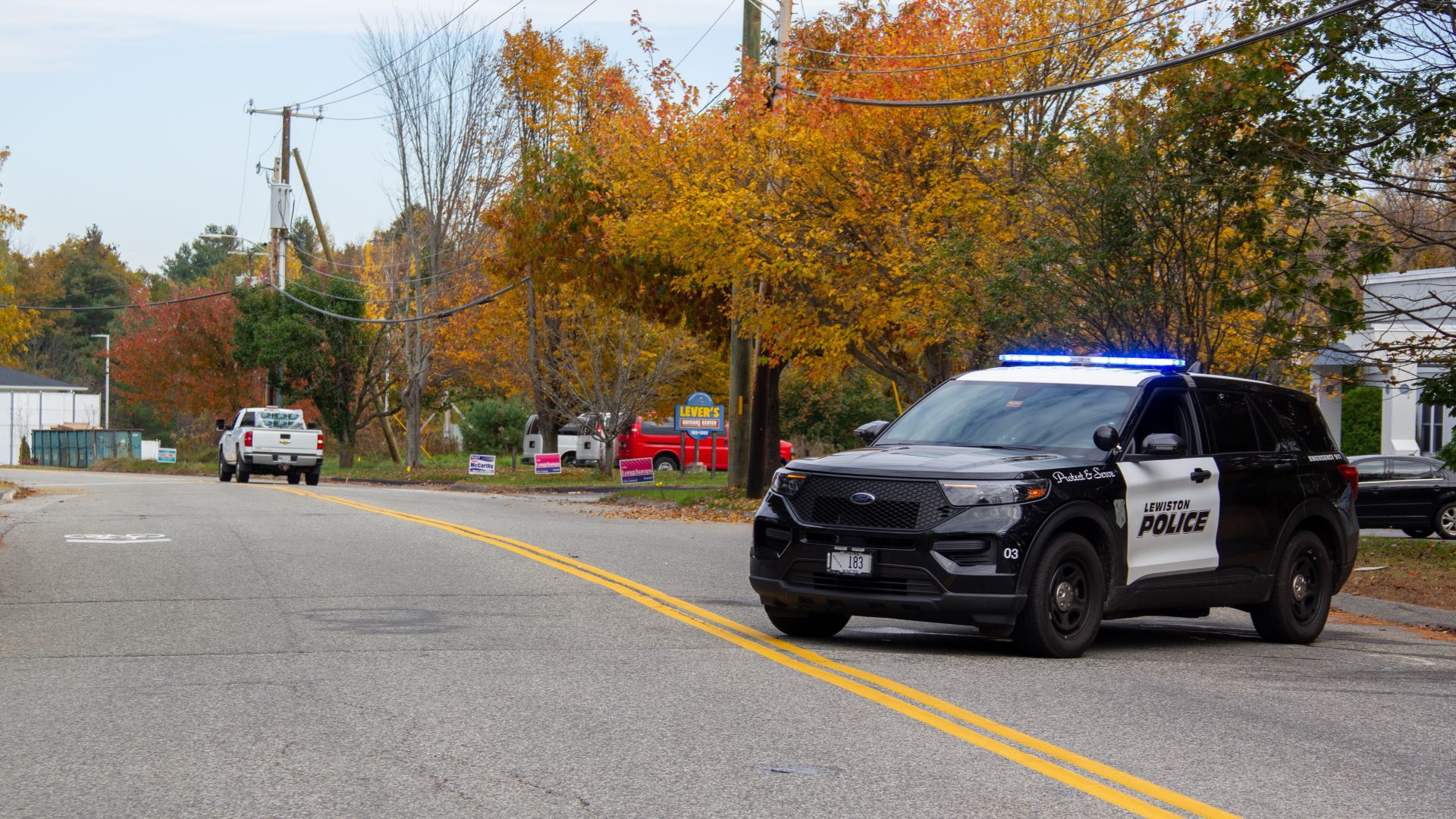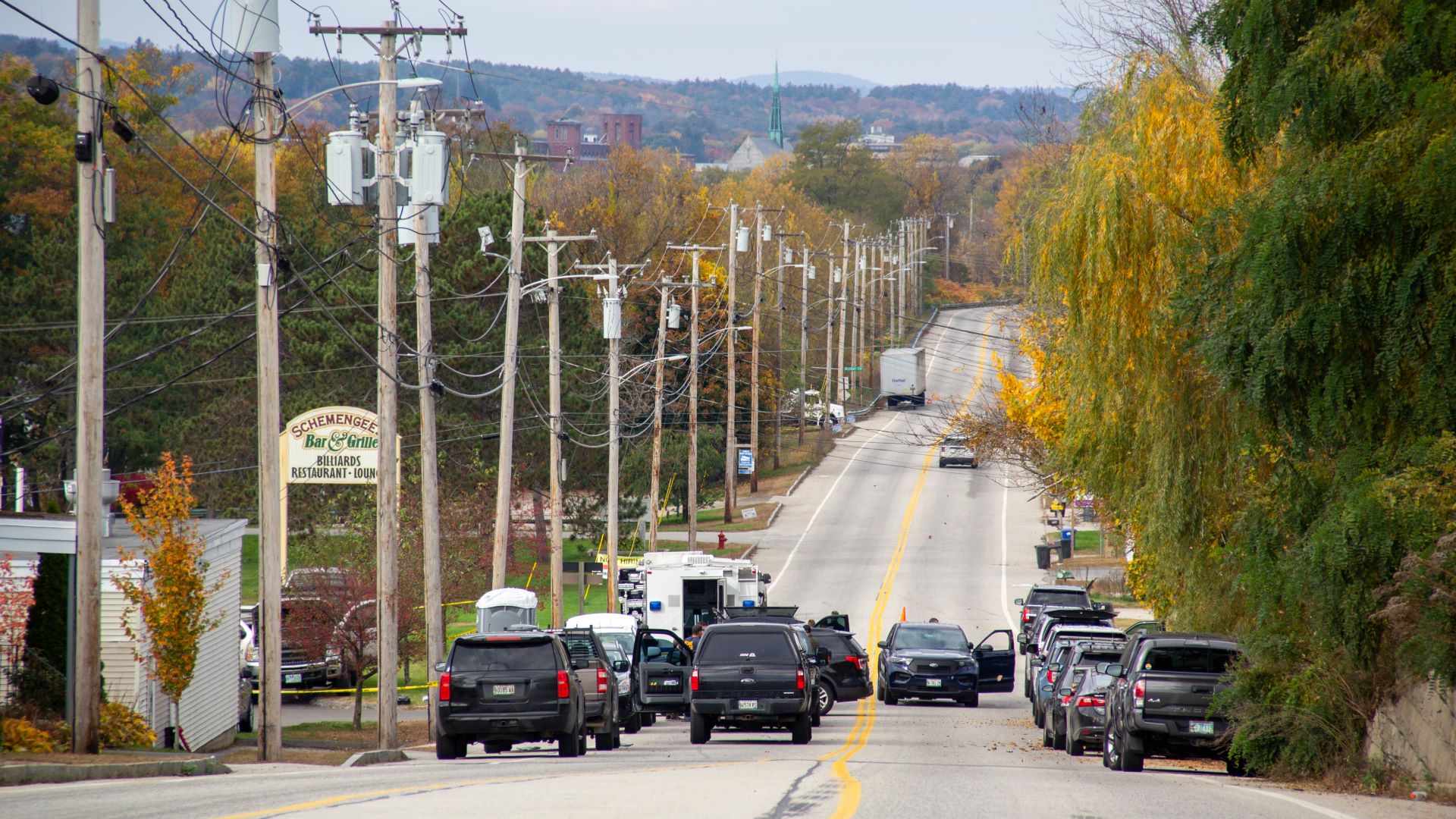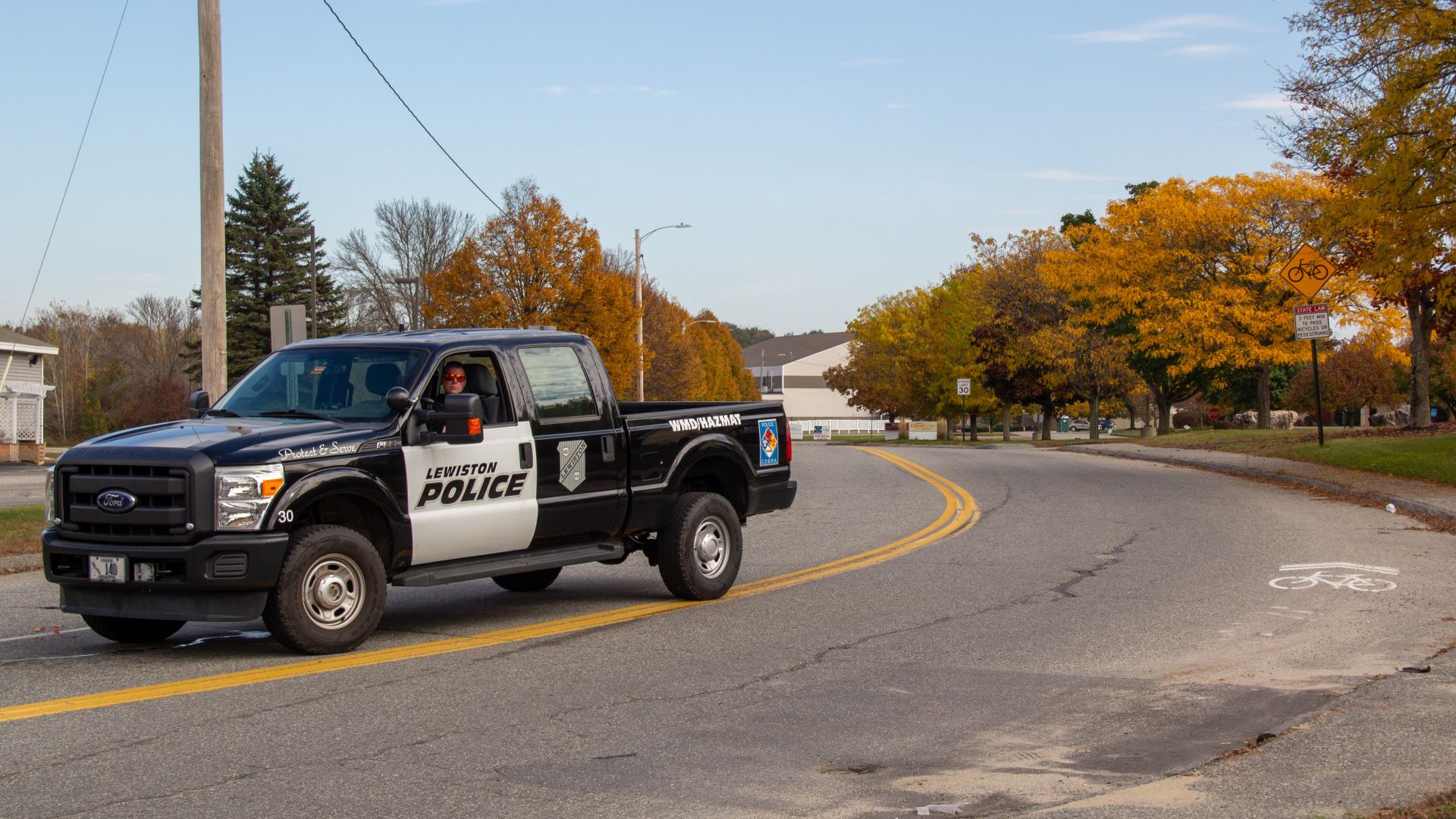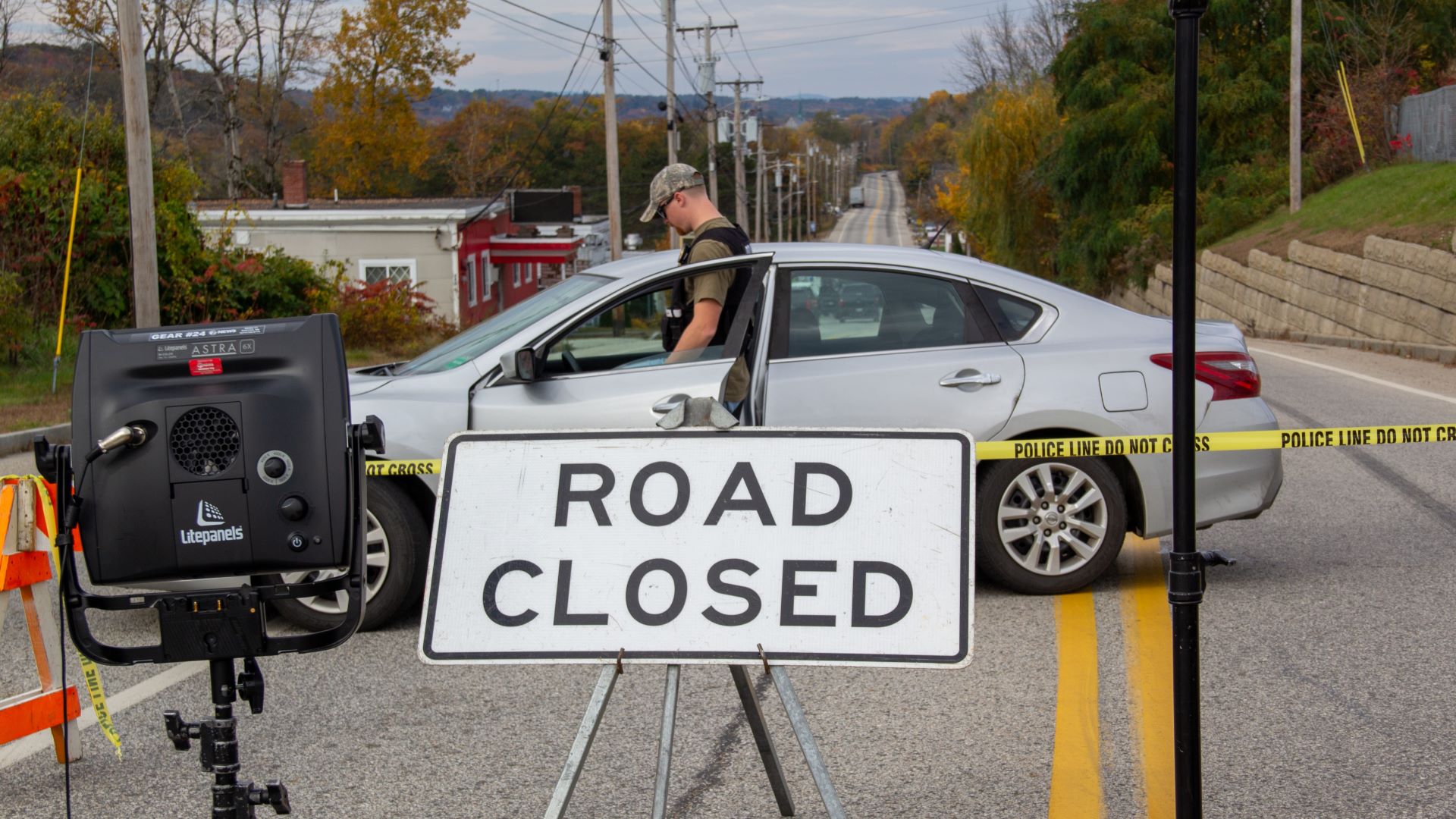Law enforcement’s readiness to handle mental health situations has come under scrutiny since October, when a Bowdoin man killed 18 people in Lewiston in the worst mass shooting in Maine history, and the disclosure that the Sagadahoc County sheriff’s office was warned twice about the shooter’s declining mental state.
An independent review commissioned by the sheriff’s office concluded that the deputies who handled the calls about Robert Card acted “reasonably.” The review recommended the office increase its mental health training and work with partners to bolster responses to people in crisis.
But a Maine Monitor investigation, which included interviews with more than two dozen law enforcement officials and mental health professionals, revealed a broader reality: With a critical shortage of mental health workers statewide, law enforcement officers are often the first responders in crisis situations.
And although officers are not licensed clinicians, they are increasingly being asked to make mental health decisions.
The Monitor found that mandated mental health training for law enforcement officers has failed to reflect growing demands, and officials said budget and staff constraints often prevent them from seeking mental health training beyond the Maine Criminal Justice Academy’s minimum requirements.
Even when officers have a high level of mental health training, it pales in comparison to mental health professionals’ years of education.
Despite increasing demand, mental health training ‘not prioritized’
Officers say their responsibilities for responding to mental health calls have expanded significantly, but their training doesn’t reflect that.
“I tell people we’re the mental health system after 5 o’clock at night until 7 o’clock in the morning and then throughout the weekend,” Cumberland County Sheriff Kevin Joyce said. “There’s not a lot of services out there, and we’re out 24 hours a day. So who do you call?”
His department, which covers 14 towns in Maine’s most populous county, responds to 600 to 700 mental health calls a year, plus more than 1,000 welfare checks, a portion of which are also mental health-related.
It is difficult to determine how often law enforcement officers respond to welfare check requests or mental health calls, the Monitor learned from records requests and interviews with officials. There is no statewide reporting database for this kind of information, and service call documentation is not standard across agencies.
Officials described a surge in mental health calls over at least the past decade, including a big jump during the COVID-19 pandemic.
“There have been times when a majority of the calls were all mental health-related, whether it was suicidal or a behavioral issue,” Joyce said. “It seems, unlike 30 years ago when I was on the streets, there’s just a high prevalence of mental health-related calls.”
Training doesn’t reflect the new reality. The Maine Criminal Justice Academy teaches fewer than 20 hours on responding to mental health during its 720-hour, 18-week residential program for recruits, according to its basic law enforcement curriculum.
Shannon Moss, a Maine Department of Public Safety spokesperson, said there are 10 units in total with “some situational mental health education or awareness component in the lesson.”
But of more than 90 units, only two are listed as specifically focused on mental health — an 11-hour unit on “dealing with the vulnerable” and a 7-hour unit on “responding to crisis situations.”
By comparison, recruits receive seven hours of training on basic fingerprinting and 16 hours on how to use a breath testing device.
The Academy Board of Trustees also requires sworn officers complete 10 hours of training a year in subject areas chosen by the board and 20 hours of elective training every two years.
Over the past four years, there has only been one three-hour mandated training — in 2022 — on responses to mental health calls. The board has not yet approved the 2024 mandatory training, Moss said.
Beyond these minimum standards, it “also depends on the department’s training budgets,” said Hannah Longley, the senior clinical director of the Maine chapter of the National Alliance on Mental Illness.
“And sadly, (mental health training) is not prioritized.”
Officers take a 47-hour course on emergency vehicle operation during basic training, yet “they respond to far more mental health calls than they do a high-speed chase,” Longley said.
Since 2018, the academy has also required that at least 20% of an agency’s officers receive at least eight hours of “nationally recognized or best practice in-person training in mental health identification awareness.”
To satisfy the requirement, officers can choose an eight-hour course in mental health first aid, a program from the National Council for Mental Wellbeing, or a 40-hour, five-day certification training in Crisis Intervention Team, or CIT, taught by Longley and others at the National Alliance on Mental Illness’s Maine chapter.
CIT is largely considered the gold standard for mental health training for law enforcement. The training provides officers with de-escalation techniques, and, most significantly, the framework for collaboration between law enforcement and mental health care providers to avoid police responses to non-violent mental health crises.
Only 53 departments, or about 41% of Maine’s more than 130 law enforcement agencies, have signed partnership agreements with NAMI Maine, according to NAMI Maine’s most recent estimate.
“Not everybody can send people to 40 hours of training … because who works while you’re gone?” said Jim Willis, who retired as the shared chief for the Mount Desert and Bar Harbor police departments in August, and now works as a consultant for Dirigo Safety.
“The smaller the department, the bigger that burden can be,” Willis said.

Willis’ former departments are large compared to some in rural areas. The police chief for Madawaska, a town of less than 4,000 people in Aroostook County a stone’s throw from Canada, only has six full-time and four reserve officers.
Taking one away for a week would be difficult, Chief Jamie Pelletier said.
There is usually only one officer on duty at a time, so even taking a person to the nearest hospital — 20 miles away in Fort Kent — can cause logistical challenges.
“We definitely could benefit from more training and more experience,” Pelletier said. “But really what it comes down to, what you learn is (from) the experience you get. You can only take so many trainings. But you deal with so many calls. Not everything happens the same way twice.”
Small departments are typical for Maine’s most rural areas — if there even is a police department. Many communities rely on the county sheriff’s office.
The Downeast town of Milbridge, for example, has Lewis Pinkham, a one-man department and also the town manager. For the past two years the department has redirected all calls to the Washington County Sheriff’s Office, said Pinkham.
Officials from both urban and rural agencies told the Monitor budgetary and staffing constraints are often the greatest barriers to more training. While CIT training from NAMI Maine is free, an agency has to pay for food and lodging unless the training is held locally. Regardless, the officer needs to be replaced during training.
Officials from agencies that have committed to NAMI Maine’s Crisis Intervention Team program have even found it difficult to get at least 20% of their officers trained in CIT.
The Cumberland County Sheriff’s Office, for example, had about 10% of its deputies CIT-certified prior to the pandemic, said Joyce, the sheriff. With retirements and resignations during the pandemic, that number has dwindled to about 5%.
Joyce said he would like to get his entire agency, not just deputies but corrections officers and even office staff, certified.
“I’ll be working the rest of my career trying to make sure that happens,” he said.
As Moss, from the Department of Public Safety, pointed out, CIT training “far exceeds the minimum” eight hours needed to satisfy the 20% requirement.
Training only goes so far
The deputies who responded to calls regarding Card’s mental health, as well as most of the other Sagadahoc deputies on duty at the time of the shooting, had completed the 40-hour crisis intervention team training from NAMI Maine, according to the independent review.
Longley, from NAMI Maine, stressed in an interview with the Monitor that she encourages officers who attend her training to know who their local mental health providers are and to call when they need them.
“We’re trying to impress upon them … if you’re going out and there’s a mental health crisis or a mental health emergency, here are the resources to call and here’s the way to support individuals,” she said.
The law enforcement officials and mental health providers the Monitor spoke with recognized that the presence of a uniformed officer can escalate a situation, leaving officers as both the sole responders and the ones most likely to inflame tensions.
“A lot of people don’t trust the police,” said Pelletier, the Madawaska police chief. “I think maybe it would be more beneficial to them if somebody that’s not wearing a uniform can come out and actually talk to them.”
At least one member of Card’s family and one of his Army Reserve unit superiors warned police that a visit from law enforcement could further aggravate him. And even though the deputies responding to Card were CIT-trained, they did not do what Longley said should be the biggest takeaway for officers from their training: know who the local mental health providers are and call them for assistance.
Even without CIT training, several law enforcement officials said they have worked to cultivate relationships with local mental health providers they can call and ask for advice. Fort Kent Police Chief Michael DeLena said it has been a goal of his tenure.
Through his department’s relationship with the nearby Aroostook Mental Health Center, DeLena has developed a contact list of professionals to dial when responding to a mental health crisis.
“I was in a situation where there was a mental health crisis … where I made the phone call (to Aroostook Mental Health Center), got the clinician on the phone, spoke to them, told them the situation, and in turn (I) gave the phone to the person in crisis. They were able to … resolve the matter,” DeLena said.
DeLena admitted even when officers receive basic mental health training, it is no substitute for the level of education and training mental health professionals undergo.
“We’ll go to a lot of situations where … we don’t know what to do and how to do it,” DeLena said. “Because we may be trained on some fundamentals, but when it comes to the mental health crisis, a lot of times I tell my officers it’s just past our pay grade … and we need help.”
Clinicians join officers as culture shifts
Some agencies have hired mental health liaisons — licensed clinical social workers or other behavioral health specialists — or contracted with providers like Spurwink or Sweetser to assist on mental health calls.
Willis, from Dirigo Safety, described a “culture shift” over the past 10 years that recognized the old way, “arresting your way out of mental health,” wasn’t working. Prior to his retirement, he helped create a mental health liaison position for his departments.
He was worried at first that officers wouldn’t accept a clinician in the patrol room, but she was welcomed with open arms.
“The officers were desperate for additional resources,” he said.

The Portland Police Department was one of the first in the state to embed a mental health liaison with officers when it created the position in 1996. Today it is one of the 15 departments nationwide recognized by the Council of State Governments Justice Center and the U.S. Department of Justice’s Bureau of Justice Assistance as a peer-to-peer learning center.
Sanford’s mental health unit, which has two police officers, a mental health clinician and an OPTIONS (Overdose Prevention Through Intensive Outreach Naloxone and Safety) liaison via Sweetser, helps divert roughly 300 calls from patrol officers, Major Matt Gagné said.
“This allows the officers that are working patrol during that time to just handle the law enforcement-type calls,” Gagné said in November.
Lauren Dembski-Martin, a licensed clinical social worker, was hired by the Scarborough Police Department in 2019 to serve as its social services navigator and head of the social services division.
Dembski-Martin assists police on the scene when it is clear a person is experiencing a mental health crisis or could, as she put it, benefit from a “layperson in a non-uniform,” using her skills to “help to either take them back to a baseline or help navigate if we’re going to do a protective custody, or something like that.”
The “good thing,” Demsbki-Martin said, is she can follow a person long-term and facilitate connections with providers to “have them transition back into the community with some supports in place.”
Having a mental health clinician on staff or contracted with an agency to jointly respond to calls is ideal, said Sarah Wright, program director of crisis services at Aroostook Mental Health Center.
Crisis safety net extremely strained
But statewide staffing shortages have made it difficult to hire providers. There are only 82 crisis response workers in Maine, according to Wright. Crisis response workers, or crisis service providers, are frontline mental health workers who must be certified as mental health and rehabilitation technicians, but do not need a master’s degree in a clinical field such as social work.
Crisis response is considered a safety-net service, like police or fire departments, Wright said, “and we’re staffing it statewide with 82 people? I’ll let you draw your own conclusions.”
Maine is far from being able to treat mental health issues through short- and long-term care, Wright said. With staffing shortages statewide (Aroostook Mental Health Center alone has 14 vacant therapy positions) and a lack of inpatient psychiatric, detoxification and emergency room beds, Maine’s crisis response safety net is extremely strained, according to Wright.
That means law enforcement agencies have to get creative, said Andrea Taajtes, the former head of the Portland Police Department’s Behavioral Health Response Program.
“Some departments that I’ve worked with in other states have utilized telehealth in some of those more rural areas where it’s not feasible to get a clinician on scene,” said Taajtes, who now works for the National Council of State Governments. Officers have tablets in their cruisers and can call a clinician for an assessment in the field.
If they are able to identify someone in need, police may be far from the closest hospital or there may be no local providers.
“A lot of law enforcement officers, when they get into law enforcement, they didn’t realize that they were signing up to be pseudo social workers,” Wright said, “which, in the end, is what a lot of them end up being. Because they’re the true frontline.”

Seth Burnes, the Dover-Foxcroft police chief, said he sees the fallout all the time. His officers are called to respond to someone in a mental health crisis, then the person is taken to a hospital where they’re assessed and released, and without anyone providing follow-up services, his department gets called again and again when the person is in crisis.
“A lot of these issues might be resolved if people who were having some of these problems had access to resources outside of hospitals. And they don’t,” Burnes said.
While he would not refuse having a mental health liaison, Burnes said it solves only one component of a much larger issue where, without resources, people fall into a cycle.
Longley, from NAMI Maine, also has reservations about embedded mental health liaisons. While she said they are a critical resource, she worries about law enforcement agencies gobbling up the limited number of providers available.
”It’s still law enforcement in the criminal justice system trying to solve the problems of community mental health and the lack of resources,” she said.
Instead, Longley said Maine needs to beef up its mental health workforce more broadly.
Mental health is a “problem that seems to get bigger and bigger,” said Joyce, the Cumberland County sheriff.
Solutions need to “start somewhere,” but Joyce said he’s also keenly aware of the staffing challenges within Maine’s mental health system.
“It’s nice to say ‘I’d like this and I’d like this,’ but much like me trying to find deputies and corrections officers, they’re not knocking our door down, either,” he said. “It’s really a quagmire.”








